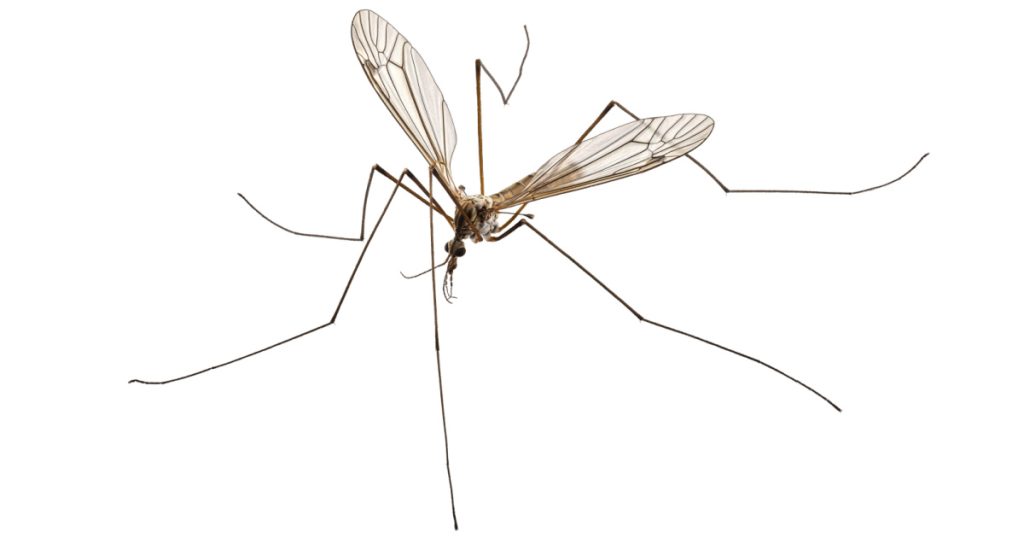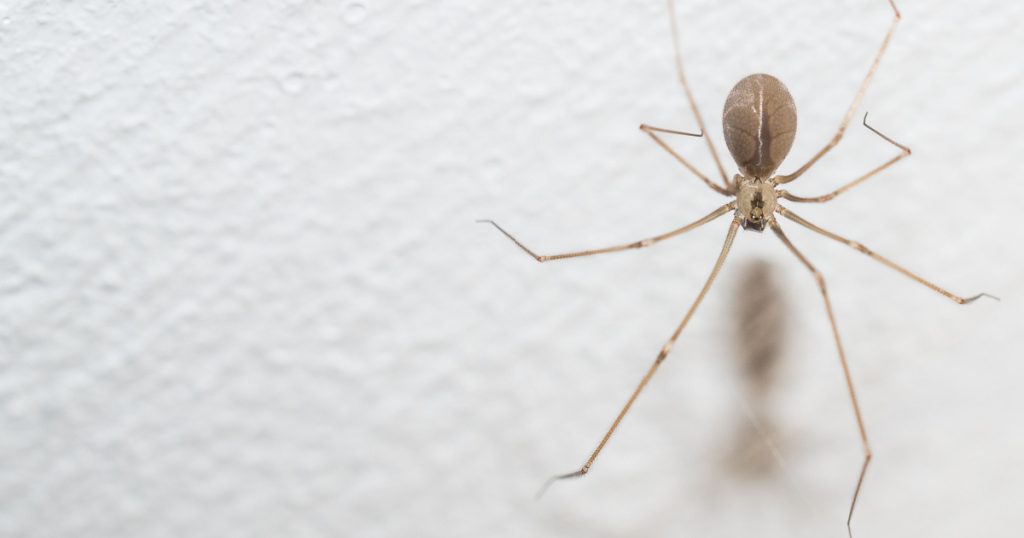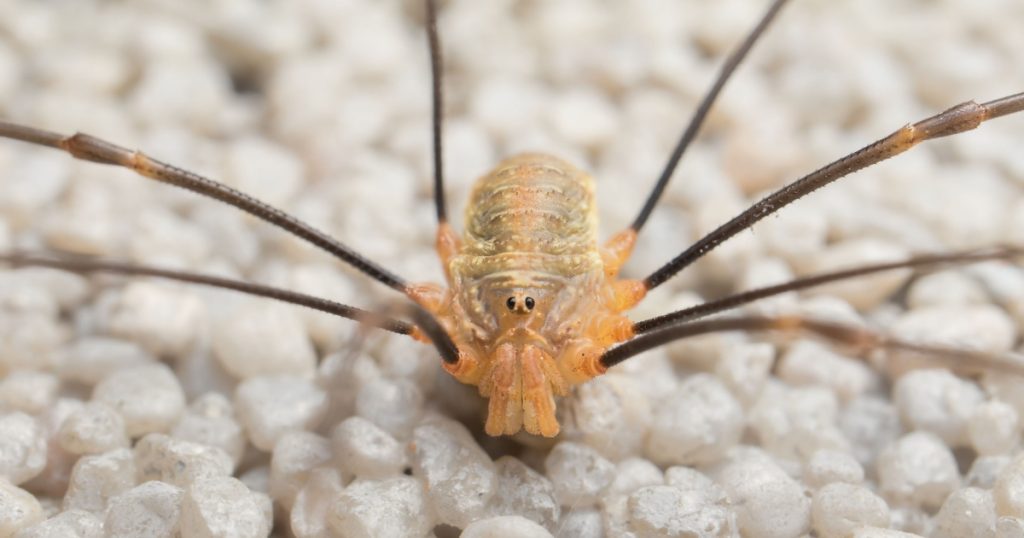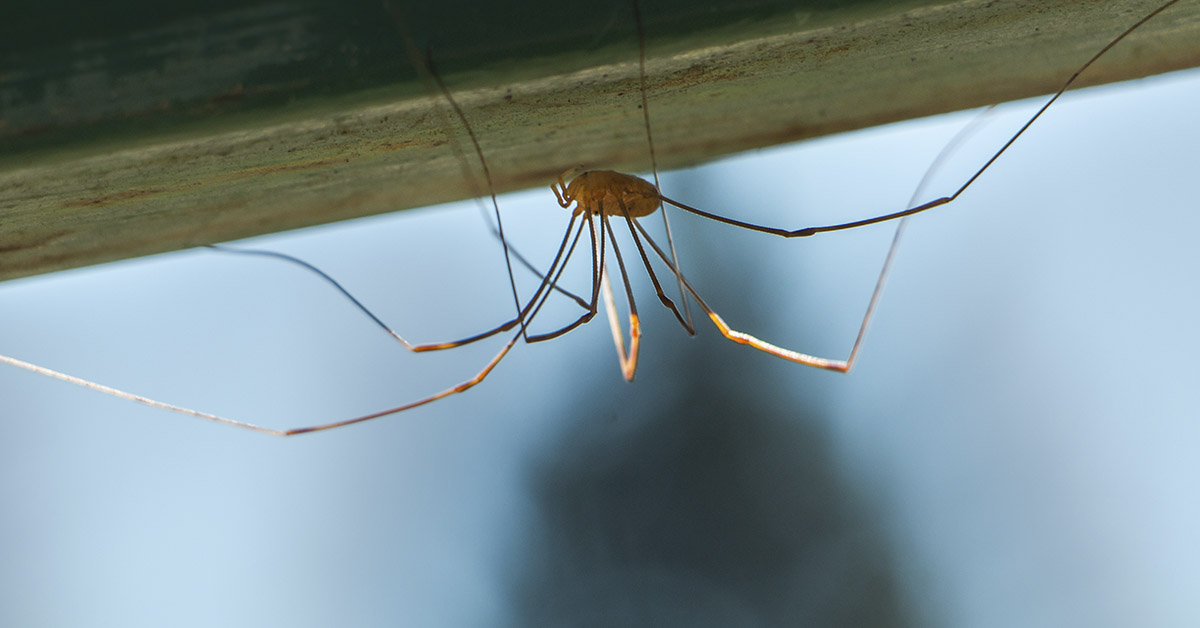September isn’t just the beginning of the autumn season. It also marks the beginning of the spider season, which is when people tend to find arachnids seeking shelter in unwanted places, namely, inside of their homes. Many people are afraid of spiders indiscriminately, but most of them are not dangerous. Rather, they might benefit their human landlords. In particular, Daddy Long Legs have an important role in our ecosystem. And contrary to popular belief, Daddy Long Legs may not be spiders at all.
The 3 Types of “Daddy Long Legs”
Crane flies

Daddy Long Legs is a nickname belonging to multiple creatures, and only one of them is actually a spider. Karl Curtis, director of reserves and community engagement at Warwickshire Wildlife Trust, speaks about one type, which are actually crane flies not arachnids. “They are out this time of year because basically they are hatching out of our lawns and various places. They live a lot of their lives underground as a grub, as a larva, and then what they do is they hatch out over the summer. Probably now is the last throw of the dice, and what they do is they come out and looking to mate, lay eggs back into vegetation and then they die off.” [1]
They are called Daddy Long Legs because of that prominent feature. “They often get confused with spiders but they’re not, they’re flies. They’re a really good food source for birds,” Curtis explains. He encourages people to catch and release crane flies in their home. “They’re really important to play their part so people should let them out their windows and not kill them.” He also dissuades people from using products like fly sprays because of their negative impact on the environment and other creatures.
Besides, crane flies don’t invade homes to attack people. “The reason they come into the house is for warmth and they are attracted to light so if the lights are on in the house they come inside, and they hatch out in the darker hours to avoid being eaten by birds. They’re not looking for shelter; they’re out looking for a mate and then looking to lay eggs, they end up in houses because their favorite habitat is short grass and we have lawns.” But these insects can make good roommates and lawn-mates since they can help get rid of snails, worms, aphids, fungus, dead insects, and funnily enough, spiders.
Additionally, Curtis points out that crane flies are not dangerous or venomous. In fact, the adults don’t have mouths and live for only two weeks. However, many people fear them because they look similar to cellar spiders (also called Daddy Long Legs.)
Read: One Dragonfly Can Eat Hundreds Of Mosquitoes Daily. Here’s How To Attract Them
Cellar spiders

“The very long spindly spiders that you get in the corners of your room, they’re called cellar spiders,” Curtis says. “Those do pack a punch, but they are not dangerous to humans. [Crane flies] they’re absolutely harmless. While the female has a point on the end of her abdomen, that’s to lay eggs, it’s not a stinger.”
Do not be mistaken. Cellar spiders are real spiders. They got the nickname Daddy Long Legs because of, of course, their long and thin legs. As so named, they often appear in houses, especially in basements and cellars. They have six or eight eyes and tend to spin irregular webs in corners.
There’s a myth that cellar spiders are the most venomous spiders in the world, but their fangs are too short to pierce human skin. This is entirely incorrect. Cellar spider venom is rather weak, and they rely on their webs to trap prey. Like most spiders, cellar spiders are harmless and don’t bite humans unless they feel threatened. But in those rare instances, their venom poses very little risk to people. Their bites typically result in a minor irritation that can be soothed with ice and over-the-counter medicated cream. (However, it’s important to seek medical attention if you have an allergic reaction or if the bite seems infected or if the symptoms get worse.) [2]
Harvestmen

Harvestmen (also called opilionids) have long legs and the “Daddy Long Legs” nickname, but like crane flies, they are not actually spiders. For one, they have only two eyes instead of multiple, and they can’t spin webs or create venom. Also, just like crane flies, you might want to keep harvestmen around because they can help eliminate other pests. [3]
They truly deserve the name Daddy Long Legs because they actually use a grooming technique called leg threading that involves sliding their legs through their mouths. They can actually open their mouths wider than similar species, and this helps them eat solid pieces of dead insects and other creatures. And like lizards and their tails, harvestmen could lose legs to escape from predators. The limbs don’t grow back, but harvestmen’s mobility seems unaffected after losing one or two.
Harvestmen are nocturnal and tend to live in dark and damp spaces like under rocks, logs, and leaves. Or in human dwellings like basements, garages, and sheds. They earned their name because they usually molt into adults during the harvest season. [4]
Keep Reading: Super-size trapdoor spider discovered in Australia
Sources
- “Spider expert explains what you should always do when you see daddy long legs.” Mirror. Estel Farell-Roig. September 3, 2023
- “What to Know About Cellar Spiders.” WebMD. Christine Loconti. November 30, 2022
- “Are daddy longlegs spiders? Myths and arachnids meet up.” ZME Science. Elena Motivans. July 22, 2023
- “Harvestmen.” CSU.

